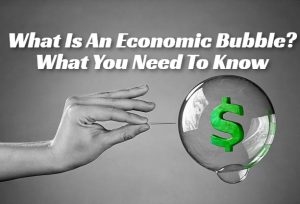What is An Economic Bubble? What You Need To Know
In the realm of economics, there are certain phenomena that can have a profound impact on financial markets and the overall economy. One such phenomenon is an economic bubble. In this article, we will explore what an economic bubble is, its causes, the types of economic bubbles that have occurred throughout history, and the implications they have on the economy. Additionally, we will discuss how to identify and protect against economic bubbles.
Economic Bubble
An economic bubble refers to a situation in which the prices of assets, such as stocks, real estate, or commodities, become inflated beyond their intrinsic value due to speculation and market psychology. During a bubble, investors tend to drive up the prices of these assets based on the expectation of further price increases, rather than the underlying fundamentals of the asset.
Causes of Economic Bubbles
Economic bubbles are typically fueled by a combination of factors. One major cause is investor psychology, characterized by a sense of optimism and euphoria, leading to excessive buying and a disregard for the asset’s true value. Speculation plays a crucial role, as investors enter the market with the intention of selling at a higher price to make a profit. Low-interest rates, easy access to credit, and loose monetary policies can also contribute to the formation of economic bubbles by creating a favorable environment for borrowing and investing.
Common Types of Economic Bubbles
There are several types of economic bubbles that have occurred throughout history. One common type is the stock market bubble, where the prices of stocks rise rapidly and become disconnected from their underlying earnings. Another type is the real estate bubble, characterized by skyrocketing property prices driven by excessive demand and speculation. Additionally, there have been commodity bubbles, such as the famous tulip mania in the 17th century, where the price of tulip bulbs surged to extraordinary levels before collapsing.
Recognizing an Economic Bubble
Identifying an economic bubble can be challenging, as it requires a careful analysis of market trends and the underlying fundamentals of the asset. Some warning signs include rapid price increases, high trading volumes, and significant divergence between price and valuation metrics. Additionally, media hype, widespread speculation, and an excessive number of new market participants can indicate the presence of a bubble.
The Impact of Economic Bubbles
When an economic bubble bursts, the consequences can be severe. Prices of inflated assets plummet, often leading to significant financial losses for investors. The bursting of a bubble can trigger a financial crisis, as the decline in asset prices can weaken financial institutions and disrupt the overall economy. Additionally, the bursting of a bubble may lead to a period of economic recession or depression, characterized by high unemployment rates, reduced consumer spending, and a contraction in economic activity.
Historical Examples of Economic Bubbles
Throughout history, there have been numerous instances of economic bubbles. One notable example is the dot-com bubble of the late 1990s, where internet-related stocks experienced an unprecedented surge in value before crashing in 2000. Another famous example is the housing bubble that triggered the global financial crisis in 2008, with the collapse of the subprime mortgage market in the United States. This housing bubble was fueled by lax lending practices, a housing market frenzy, and the securitization of subprime mortgages.
Another historical example is the Dutch tulip mania that occurred in the 17th century. During this period, the prices of tulip bulbs soared to exorbitant levels, driven by speculation and speculative fever. However, the bubble eventually burst, leading to a sharp decline in tulip bulb prices and causing significant financial losses for many investors.
These historical examples serve as reminders of the devastating consequences that can arise from economic bubbles. They highlight the importance of understanding the underlying factors and dynamics that contribute to the formation of bubbles in order to minimize their impact on individuals and the broader economy.
Strategies to Protect Against Economic Bubbles
While it is challenging to predict and prevent economic bubbles entirely, there are strategies that individuals and policymakers can employ to protect themselves and mitigate the risks associated with such events.
Diversify Your Investments: By spreading your investments across different asset classes and sectors, you can reduce the potential impact of a bubble in any one area. Diversification helps to minimize the risk of significant losses if a particular asset class experiences a sharp decline.
Stay Informed and Educated: Keep a close eye on market trends, economic indicators, and financial news. Understanding the fundamentals of the assets you invest in and conducting thorough research can help you make more informed decisions and identify potential warning signs of a bubble.
Exercise Caution and Rationality: Avoid being swept up in market euphoria and make investment decisions based on careful analysis rather than emotional impulses. Remember that markets are subject to cycles, and prices can fluctuate significantly.
Set Realistic Expectations: Be realistic about the potential returns on your investments and avoid getting caught up in unrealistic projections or promises of extraordinary profits. If something appears too good to be true, it probably is.
Maintain a Long-Term Perspective: Investing with a long-term view can help mitigate the short-term volatility associated with bubbles. By focusing on your long-term financial goals and maintaining a diversified portfolio, you can weather market fluctuations more effectively.
Conclusion
speculative behavior and market psychology. Economic bubbles can have far-reaching consequences, including financial losses, market
volatility, and even economic crises. Recognizing the signs of a bubble and employing prudent investment strategies can help individuals and
policymakers mitigate the risks associated with these phenomena. By staying informed, diversifying investments, and maintaining a rational
approach, individuals can navigate the complexities of economic bubbles more effectively.
